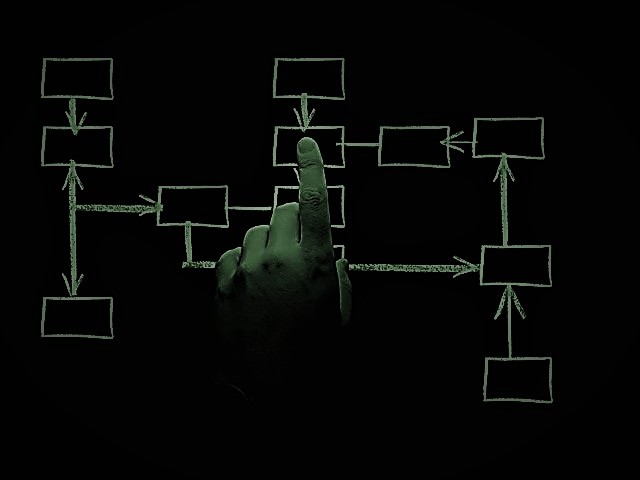Strategic Planning Process Model
Table of Contents
Bear in mind that some of the links in this post are affiliate links and we may earn money or products from the companies mentioned in this post. You won't pay any additional costs. The decision is yours, and whether or not you decide to buy something is completely up to you..
Overview:
The Strategic Planning Process Model is used by organizations to plan for achievement of their long-term goals and milestones. The Strategic Planning Process Model is an organizational tool that is used by groups and corporations globally to refine their goals and maximize their resources. The Strategic Planning Process Model is one way in which businesses strive to attain a competitive edge.
Resource Planning:
Before the Strategic Planning Process Model can be finally agreed and implemented, the leader(s) must ensure that there will be sufficient resources available for each activity at each stage of the plan. In reality the planning for the provision of resources must be viewed as a critical element of the plan itself. The strategic plan and the objectives within it will not be achieved if the activities needed to carry out the plan are not properly supported by appropriate resources.
Resources Forecast:
A resources forecast should be carried out as part of the Strategic Planning Process Model. All planned activities, stages, and objectives, should be analysed for resource requirements (resources as in the list below). If the forecast identifies areas where the available or deliverable resources do not match the levels required, then this must be corrected or the plan must be altered. Once the leader(s) can be satisfied that the necessary resources will be available, the plan can be finalized and implemented with confidence.
Prioritizing Resources:
It is tempting to rank these resources, perhaps arguing that human resources, and accompanying expertise and experience should be the highest on the list, but this is not logical. Lack of, or inadequate, financial, physical, or systems resources for any one of the many activities, or at any stage of the plan, can be as damaging as not having the required human resources. It is also tempting to think of resources as only human, financial, or physical, and also as coming only from internal sources. Again, this is not appropriate, as the Strategic Planning Process Model needs support from other areas, internally and externally, that should also be described as resources, such as systems, policies, suppliers, external stakeholders.
Organizational Infrastructure:
The shape and complexity of the organisational structure should be designed to serve the strategic direction taken. A structure that is as flexible, dynamic, and responsive a structure as possible is essential. In some business sectors, for example in many parts of the public sector, there will be constraints and barriers that will dictate a more bureaucratic and rigid structure that limits responsiveness and flexibility. Much of this may be unavoidable, but it should be continually challenged and loosened where possible. In most other sectors there is no excuse. The leaders of organisations in commercially driven sectors, and this now includes education, health, charities, and the utilities, must strive to structure their organisations so that they can respond to the fast pace and continual changes of today’s business world.
Systems, Policies, Procedures:
In functional areas such as IT, Finance, HR and Personnel, Performance Appraisal and Reward, Conditions of Employment, Working Patterns, Training and Development, the systems, policies, and procedures must be operating in support of the strategic plan and the accompanying operational activities. An appropriate Quality Assurance Management System should be in place, guided by the strategic objectives, constantly monitoring the quality standards of all the systems, including its own, to ensure that they are not hindering or damaging the chances of achieving the strategic objectives identified in the Strategic Planning Process Model.
Location:
For most organisations the location is not easily changeable, and would not normally be challenged. But the leader(s) must look at the current location in terms of its strategic suitability. If the location is not supportive to the strategies, then alternatives must at least be explored. If moving to a more appropriate location is logistically and financially possible, then that relocation should take place at the earliest opportunity.
Front-line Physical Resources:
For manufacturing organisations this will encompass production facilities, plant, equipment, and so on. For service sector organizations this will mean the physical resources at the point of sale and-or delivery points. The condition and capacity of physical resources in these areas must be able to meet the operational demands dictated by the Strategic Planning Process Model.
Support Functions Physical Resources:
For most organisations this means activity areas such as procurement, design, research and development, administration, finance, human resources, maintenance, marketing, sales, distribution, and so on.
Managers in front-line and support areas must focus on achieving the operational objectives that have been derived from the strategic plans. The leader(s) must implement a system of regular performance appraisal and consultation to ensure that these areas are resourced appropriately and operated effectively.
Suppliers:
A key resource, but because they are outside the organisation, are often forgotten. The quality of supplies, be they raw materials, equipment, parts, consumables, people, or advisory services, is a critical factor in the capability of the organisation. If inputs are not of the right quality then costs can rise, damage can be caused, delays can occur, and the operational performance of the organisation could suffer. In turn, the achievement of the strategic objectives of the organisation could be delayed or damaged resulting in a breakdown of the Strategic Planning Process Model.
Human Resources:
The question that the leader(s) must ask is whether the quality, quantity, and distribution of the human resources within the organisation, is sufficient to satisfy the needs of the chosen strategies. Existing staffing levels, degrees of expertise and experience, flexibility, distribution, predicted wastage or turnover, are all areas that need analysing. Intangible factors, such as levels of morale, motivation, cultural attitudes, should also be evaluated. A human resources audit must be carried out and where gaps or weaknesses are identified these must be corrected, and brought up to the required levels.
Financial Resources:
In simple terms, the leader(s) must be satisfied that the funding, the cash-flows, the budgets, will meet the demands of the activities. If necessary, and affordable, additional funding must be obtained, linking this resource need to external stakeholders as discussed below, such as banks, shareholders, and other investors.
Marketing and Distribution:
Whatever the product or service that the organisation is offering, the marketing and distribution functions are as important, if not more so, than any other internal function. Without revenue, whether from customer sales, grants, government funds, or other sources, the organisation must persuade the purchaser, or provider, to deliver revenue to it. This revenue will be a critical element of the financial resources needed to support the planned activity, and the continued flow of this revenue must be protected. This entails ensuring that the marketing and distribution function is itself appropriately funded for proper and efficient execution of the Strategic Planning Process Model.
External Stakeholders:
This group of resource sources includes shareholders, investors and other funding organisations discussed in the section on Financial Resources. These need to be managed and informed appropriately. Other stakeholders could, depending on the nature of the business, include the local authorities, public services, local and-or national media, trade unions, local residents, national or international governments, national or international trade organisations, business partners, and so on. Where the support of any external stakeholder is identified as important to the success of the strategic plan, then effort and energy should be spent on building and maintaining a positive relationship with them. Maintaining positive relationships with external stakeholders is essential, as they are a vital resource in supporting the organisation’s strategic direction.
Intangible Resources:
These include goodwill, reputation, and brands. Individually and collectively these can be important to the success of the strategic plan. Goodwill is a value given to the reputation, the customer loyalty, the brand values, and in some cases the public image of the organisation. In monetary terms it is the difference in total value, between the tangible assets value given to the business and the actual value that a buyer would pay or an investor would calculate when deciding to invest or not. Reputation that the organisation has with its competitors, with its customers, in the public psyche, and although difficult to calculate, is also valuable. Brands can be highly valuable, as demonstrated by some of the best known, which generate immediate positive responses throughout the world.These intangible assets are resources, with a value, which the strategic plan will have considered and made use of, or planned to protect, or develop, as part of the plan. The leader(s) must ensure that these resources, these assets, are managed effectively and support the strategic plan as intended.
Management:
The effectiveness of the individuals and teams that make up the management of the organisation are critical to the success of the chosen strategies and the Strategic Planning Process Model. Without an effective management network supporting the planned activity and striving to achieve the strategic and operational objectives, the strategies will fail. As discussed in an earlier article, the leader(s) must put in place an effective management network, and ensure that this highly valuable resource is itself resourced appropriately.
The Operational Employees:
Sadly this resource, this group of people, is often overlooked when the achievement of strategic objectives is discussed. Wrongly, it is assumed that objectives can be achieved as long as there is good management, good leadership, and appropriate financial and physical resources in place. Not true. Unless the workforce is appropriately skilled, experienced, qualified, continuously developed, and committed to support the achievement of the strategic plans, then the plans will fail. It is critical that the operational employees, in all functional areas, are involved, informed, and persuaded to support the strategic plan. The role of the leader(s) here is to ensure that the management team makes this happen.
Leadership:
The final resource that we look at is the leadership of the organisation. The role of the leader(s) is to lead the organisation into the future, in a direction and a condition that will ensure that the organisation is successful. Whichever direction is chosen and whatever the measure of success is, the leader(s) must make certain that the strategic plan is appropriately resourced at every stage and in every activity area. In addition, the leader(s) must ensure that they lead the organisation in an appropriate manner, adopting an appropriate style of leadership for each stage of the journey that the strategic plan is leading the organisation into.
In Summary:
At the start of this article it was stated that it was not logical to prioritize, or rank, the resources needed to support the strategic plan and execution of the Strategic Planning Process Model. The range of resources is broad and diverse, and all should be treated as equally important. Each stage and each activity area must be resourced appropriately, otherwise serious damage can be done to the chances of the plans being successfully implemented. However, there is one exception to this rule, and that is regarding Leadership. The leader(s) must ensure that the plan is resourced appropriately and then accept responsibility for being the most critical resource of all. Without the essential resource of effective leadership, regardless of how well other resources are provided and applied, the plans will fail.







